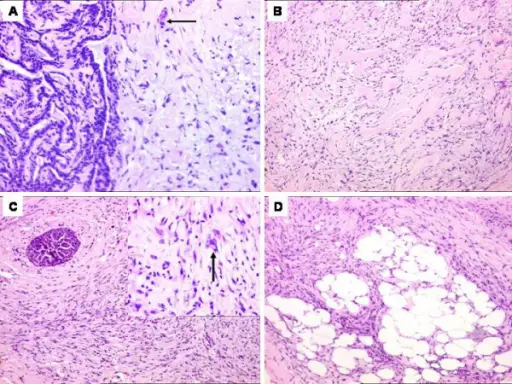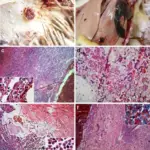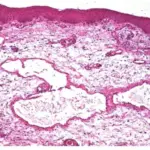Fibromatosis is a common fibrous tumor of the young.
What is the Pathology of Fibromatosis?
The pathology of fibromatosis is:
–Etiology: The cause of fibromatosis remains unclear. In some types of fibromatosis such as desmoid tumours, it is thought that the condition may be related to trauma, hormonal factors, or have a genetic association.
–Genes involved: t(12;12)(p13;q25) ETV6-NTRK3 fusion transcript
–Pathogenesis: The sequence of events that lead to fibromatosis may be due to increased expression of cytokines associated with angiogenesis usually found in wound healing and invasive tumors.
–Morphologic changes: The morphologic changes involved with fibromatosis are benign growth of fibroblastic and myofibroblastic cells.
How does Fibromatosis Present?
Patients with fibromatosis are typically females below 15 years of age. The symptoms, features, and clinical findings associated with fibromatosis depend on the location of the tumor. In the abdomen fibromatosis may press against blood vessels and nerves and cause pain, a limp, or problems using legs, feet, arms, or hands. Fibromatosis can block the gastrointestonal tract or grow into nearby tissues causing severe pain, bleeding from rectum, and other health issues.
How is Fibromatosis Diagnosed?
Fibromatosis is diagnosed by: ultrasound, imaging scans like x-ray, MRI, CT scan, and biopsy of the tumor cells.
How is Fibromatosis Treated?
Fibromatosis is treated by surgery, nonsteroidal anti-inflammatory drugs with or without hormonal manipulation, chemotherapy, radiation therapy, and other forms of local therapy.
What is the Prognosis of Fibromatosis?
The prognosis of fibromatosis is good but the aggressive fibromatosis can cause life-threatening problems or even death.



